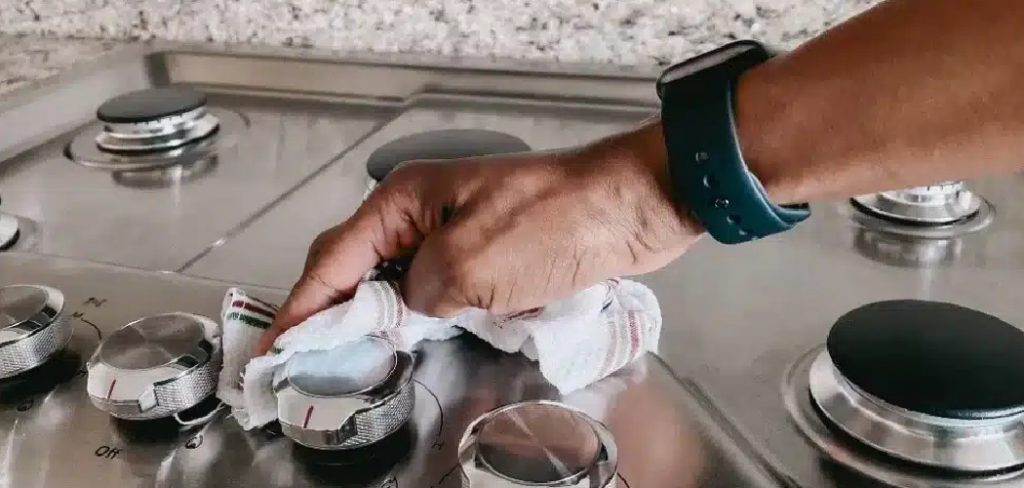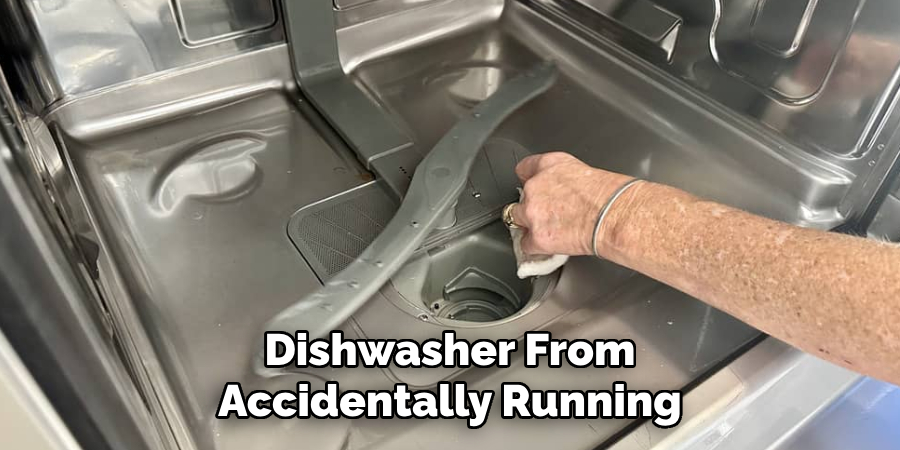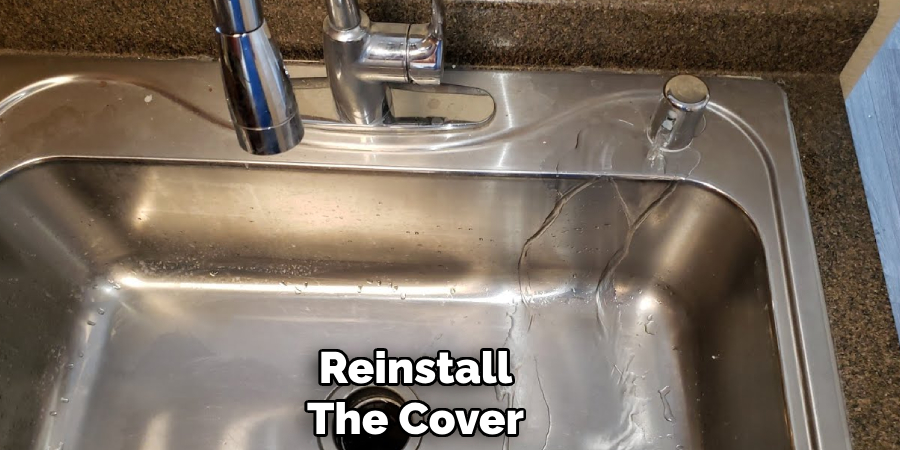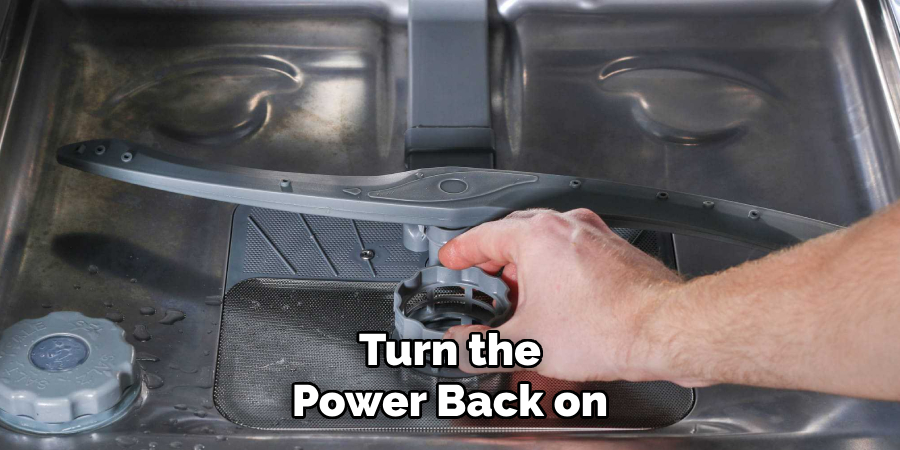A dishwasher air gap is a small yet crucial component in your kitchen plumbing system. It prevents wastewater from flowing back into your dishwasher, ensuring your dishes are cleaned with fresh water. Over time, debris, grease, and food particles can clog the air gap, leading to drainage problems and unpleasant odors.

Cleaning the air gap is a simple maintenance task that can keep your dishwasher running efficiently and prolong its lifespan. This guide on how to clean a dishwasher air gap will walk you through the process step by step.
What is a Dishwasher Air Gap?
A dishwasher air gap is a small, cylindrical fixture usually located on the sink or countertop near your faucet. Its primary function is to act as a safeguard against contaminated water re-entering your dishwasher. The air gap creates a physical break in the water flow, so if there’s a blockage in the drain or garbage disposal, the dirty water won’t back up into the dishwasher.
This feature is an essential part of modern plumbing codes and helps maintain proper hygiene and protect your plumbing system from potential cross-contamination.
Why is it Important to Clean a Dishwasher Air Gap?
Over time, your dishwasher’s air gap can become clogged with debris, food particles, and soap scum. This buildup can prevent proper drainage and lead to foul odors in your kitchen. A dirty air gap also increases the risk of cross-contamination and can affect the overall performance of your dishwasher.
Regularly cleaning your dishwasher air gap is crucial for maintaining a clean and functional kitchen.
Needed Materials
Gloves:
It’s always a good idea to wear gloves when cleaning your dishwasher air gap. This will protect your hands from any sharp objects or bacteria that may be present.
Cleaning Supplies:
You’ll need some basic cleaning supplies, such as dish soap, a small scrub brush, and a toothpick or pipe cleaner.
Vinegar:
Vinegar is an excellent natural cleaner that can effectively break down grease and remove odors. You’ll need about ¼ cup of white vinegar for this cleaning task.
8 Step-by-step Guidelines on How to Clean a Dishwasher Air Gap
Step 1: Turn Off the Power
Before you start cleaning your dishwasher air gap, ensure that the power to your dishwasher is turned off. This step is essential for your safety, as it prevents the dishwasher from accidentally running while you work.

Locate the circuit breaker that controls your dishwasher and switch it off, or unplug the dishwasher if it’s connected to an accessible outlet. Taking this precaution will allow you to clean confidently and avoid any potential electrical hazards.
Step 2: Remove the Cover
Locate the air gap cover on your countertop or sink. This is typically a small, cylindrical cap that can be easily removed by hand. Gently twist or pull the cover upward to detach it from the air gap assembly. If the cover feels stuck, use a soft cloth to get a better grip and avoid scratching the surface.
Once removed, set the cover aside in a safe place until you’re ready to reinstall it. Removing the cover will give you access to the inner components of the air gap for cleaning.
Step 3: Check for Debris
Look inside the air gap to see if there’s any visible debris blocking the tubes or the bottom of the fixture. You can use a flashlight to get a better view and identify any buildup that needs to be removed.
If you notice large pieces of food or other material, use your gloved hand or tongs to remove them. For smaller particles and residue, proceed to the next step.
Step 4: Clean with Soap and Water
Fill a small bowl with warm water and add a few drops of mild dish soap. Dip your scrub brush into the soapy water and gently scrub all parts of the air gap, including the cap and the tubes. Pay special attention to any crevices or corners where dirt and grime may be hiding.
Once you’ve thoroughly scrubbed all surfaces, rinse with clean water and wipe dry with a towel.
Step 5: Remove Residue with Vinegar
For tougher buildup and odors, use vinegar to effectively dissolve residue and eliminate bacteria. Pour about ¼ cup of white vinegar into the air gap tubes and let it sit for at least 15 minutes.

Then, using your toothpick or pipe cleaner, gently dislodge any remaining debris from the tubes. The acid in the vinegar will help break down grease and remove stubborn particles.
Step 6: Run Water Through the Air Gap
After cleaning the air gap with soap, water, and vinegar, it’s important to flush out any loosened debris to ensure proper functionality. Place a cup or small container beneath the air gap’s outlet to catch any water and debris that may come out. Next, run warm water through the air gap using a faucet or a pitcher, pouring it directly into the tubes.
Allow the water to flow for a minute to ensure all residue is cleared. Watch for any signs of blockage—if water backs up or drains slowly, repeat the cleaning steps as needed. This step will thoroughly rinse out any remaining dirt and verify that the air gap is now clear and free of obstructions.
Step 7: Reinstall the Cover
Once you’ve completed cleaning and confirming proper drainage, it’s time to replace the cover. Simply align the cap with the air gap and press down until it snaps into place. Make sure that the cover is secure and flush with the countertop or sink surface.

It’s essential to reinstall the cover properly to maintain the air gap’s effectiveness in preventing cross-contamination.
Step 8: Turn the Power Back On
Finally, it’s time to turn the power back on and test your dishwasher. Run a cycle with some dirty dishes to ensure that everything is working correctly. If you don’t notice any issues or foul odors after completing these steps, congratulations! You’ve successfully cleaned your dishwasher air gap.
Following these steps on how to clean a dishwasher air gap regularly, about once a month, will help keep your dishwasher air gap clean and functioning correctly. This simple maintenance task can save you from costly repairs and ensure proper hygiene in your kitchen. Remember to always turn off the power before cleaning and use protective gloves for added safety. With these tips in mind, you can maintain a clean and efficient dishwasher air gap for year-round use. Happy cleaning!
Frequently Asked Questions
Q: How Often Should I Clean My Dishwasher Air Gap?
A: It’s recommended that you clean your dishwasher air gap at least once a month to prevent buildup and maintain proper functionality.
Q: Do I Need Any Special Tools to Clean My Dishwasher Air Gap?
A: No, basic cleaning supplies like soap, water, and vinegar are all you need for this task. A small scrub brush and a toothpick or pipe cleaner may also come in handy for removing debris.
Q: Can I Use Other Cleaning Products Instead of Vinegar?
A: Yes, there are various dishwasher cleaners available on the market that can be used instead of vinegar. However, vinegar is a natural and cost-effective alternative that works just as well.

Q: Why is it Important to Keep My Dishwasher Air Gap Clean?
A: A clean air gap ensures proper drainage from your dishwasher and prevents cross-contamination in your kitchen. Neglecting to clean it regularly can lead to clogs, odors, and potential health hazards.
Q: Can I Clean My Dishwasher Air Gap While the Power is On?
A: No, it’s crucial to turn off the power before cleaning your dishwasher air gap for safety reasons. Always follow proper precautions to avoid electrical hazards. There are a few common questions that may come up when learning how to clean a dishwasher air gap. Here are some of the most frequently asked questions and their answers:
Q: How Often Should I Clean My Dishwasher Air Gap?
A: It’s recommended that you clean your dishwasher air gap at least once a month to prevent buildup and maintain proper functionality.
Q: Do I Need Any Special Tools to Clean My Dishwasher Air Gap?
A: No, basic cleaning supplies like soap, water, and vinegar are all you need for this task. A small scrub brush and a toothpick or pipe cleaner may also come in handy for removing debris.
Conclusion
Cleaning a dishwasher air gap may seem like a daunting task, but by following these simple steps, you can easily maintain this crucial component of your plumbing system. Regularly cleaning your air gap will not only keep your kitchen hygienic but also extend the lifespan of your dishwasher. So, next time you’re doing some routine maintenance in your home, don’t forget to pay some attention to your dishwasher air gap!
Remember to always prioritize safety and use appropriate cleaning supplies to ensure effective results. With these guidelines on how to clean a dishwasher air gap, you can confidently keep your kitchen clean and functional for a healthier living environment. Happy cleaning!
Professional Focus
Angela Ervin, a former interior designer turned blogger, specializes in kitchen design and renovations. Through her website, she blends her passion for cooking with design expertise, sharing practical and creative ideas. Known for balancing functionality and beauty, Angela’s insightful content has made her a trusted voice in home design and lifestyle.
About the Author
Angela Ervin, an experienced interior designer and blogger, combines her passion for kitchen renovations with storytelling. Living in Petersburg with her family, she enjoys cooking and testing her projects firsthand. Known for her humor and relatable style, Angela shares creative, functional design insights through her content, making her a trusted voice in home design.
Education History
University: Virginia Commonwealth University
Degree: Bachelor of Fine Arts (BFA) in Interior Design
- Angela’s education at VCU focused on mastering core interior design principles, including spatial planning, color theory, materials selection, and sustainable design practices.
- She gained hands-on experience through studio projects and collaborative design exercises, which honed her ability to create functional and aesthetically pleasing environments.
- Her coursework also emphasized problem-solving and practical applications of design, preparing her for real-world projects like her self-directed kitchen renovations.
- The program’s strong foundation in both technical skills and creative expression shaped Angela’s ability to seamlessly integrate form and function in her work.
